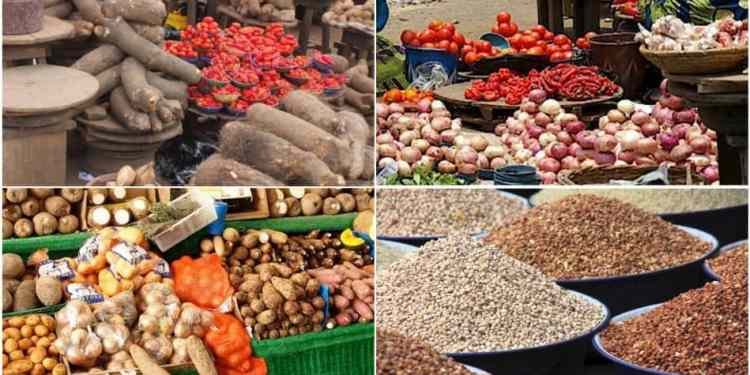The soaring prices of commodities have been but into analytical perspective by the National Bureau of Statistics as its latest Consumer Price Index and Inflation report showed that food inflation soared 40.66 per cent in May
This shower that the price of food rose by 61 per cent from 25.25 per cent in June 2023 to 40.66 per cent in May 2024, highlighting a steady rise in the cost of living.
The CPI measures the average change over time in the prices of goods and services consumed by people for day-to-day living.
Recall, on Saturday, the NBS disclosed that headline inflation moved by 0.26 per cent to 33.95 per cent from 33.69 per cent recorded in April.
The report noted that the inflation rate climbed to a 28-year high since March 1996 on higher food and transport prices.
It said, “In May 2024, the headline inflation rate increased to 33.95 per cent relative to the April 2024 headline inflation rate which was 33.69 per cent.”
The statistics agency also reported major contributing items to headline inflation in May 2024 including food & non-alcoholic beverages (contributing 17.59 per cent), housing, water, and electricity, gas & other fuel (contributing 5.68 per cent), and clothing & footwear (contributing 2.60 per cent).
A breakdown of the data showed that the price of food commodities increased steadily from 25.25 per cent in June, to 26.98 per cent in July, 29.34 per cent, 30.64 per cent in August, 31.52 per cent in September, 31.52 per cent October, 32.84 per cent in November and 33.93 per cent as the end of December 2023.
The rate further increased to 35.41 per cent in January, 37.92 per cent in February, crossed the 40 per cent mark in March, 40.53 per cent in April and 40.66 per cent in May.
NBS said the rate rose to 40.66 per cent in May, compared to the 24.82 per cent reported in the same month last year — indicating an increase of 15.84 per cent points.
According to the bureau semovita, oatflake, yam flour prepackage, garri, bean, etc (which are under bread and cereals class), Irish potatoes, yam, water yam, etc (under potatoes, yam and other tubers class), contributed to the year-on-year increase in the food inflation rate.
Other contributors are palm oil, vegetable oil, etc (under oil and fat), stockfish, mudfish, crayfish, etc (under fish class), beef head, chicken-live, pork head, and bush meat (under meat class).
“The food inflation rate in May 2024 was 40.66 per cent on a year-on-year basis, which was 15.84 per cent points higher compared to the rate recorded in May 2023 (24.82 per cent).
“The average annual rate of Food inflation for the twelve months ending May 2024 over the previous twelve-month average was 34.06 per cent, which was 10.41 per cent points increase from the average annual rate of change recorded in May 2023 (23.65 per cent),” the report said.
Similarly, Bauchi, Kogi, and Oyo are Nigeria’s three most expensive states on a year-on-year basis after recording the highest All-Items Inflation in May 2024.
The report said in May 2024, the All-Items inflation rate on a Year-on-Year basis was highest in Bauchi 42.30 per cent, Kogi (39.38 per cent Oyo (37.73 per cent).
On the flip side, Borno (25.97 per cent), Benue (27.74 per cent) and Delta (28.67 per cent) recorded the slowest rise in Headline inflation on a Year-on-Year basis.
In recent years, food prices have been on the rise across Nigeria. The situation deteriorated due to the impact of government policies such as the removal of subsidies on petrol, among others.
The upward trend in the prices of these staples and other products has weakened the purchasing power of many citizens, making it difficult for many households in the country to afford daily meals.
At the March Monetary Policy Committee meeting, the Governor of the Central Bank of Nigeria, Olayemi Cardoso, said that the huge purchase of foodstuffs by the government as palliatives is contributing to the galloping food inflation in the country.
The CBN governor noted that inflationary pressure had failed to abate despite the hike in the interest rate in February.
He said, “Staff reports show that the principal drivers of acceleration in inflation are hikes in food and energy prices which are associated with structural factors. Further, new dimensions of inflationary pressure are emerging. First, ‘seller inflation’ arising from the oligopolistic structure of commodity markets such as noticed in the prices of local commodities is gaining significance. In addition, huge purchases by the government for distribution as palliatives to vulnerable citizenry is adding another dimension to the food price inflation, with seasonal factors of food price increases during religious fasting and festive periods, adding price cyclicality.”












